External tools
You can define standalone third-party applications as external tools and run them from JetBrains Rider.
You can pass contextual information from your project to the external tool as command-line arguments (for example, the currently selected or open file, the project source path, and so on), view the output produced by the tool, configure to launch the tool before a run/debug configuration, and more.
There are different types of external tools that you can use with JetBrains Rider:
Custom MSBuild tools help you run external tools custom MSBuild tasks outside current projects.
Local external tools are applications that run locally on your machine.
Remote SSH external tools are executed on a remote server over SSH.
Add a custom MSBuild tool
You can configure custom tools (MsBuild with custom arguments or an external executable) that automatically process specific files when they changed. For example, JetBrains Rider generates code from .resx files using the ResXFileCodeGenerator tool (this association is built-in).
Suppose, you need to generate .aspx.designer.cs files when editing .aspx files. You can do this using Redesigner, an open source WebForms generator.
To have Redesigner as an executable, either build it from sources or download the Redesigner.exe build with the .NET Framework 4.6.2 from JetBrains website.
In the Options dialog Ctrl+Alt+S, select .
Click
 and provide all necessary details:
and provide all necessary details: Name:— arbitrary name to identify the tool.
Extensions:— comma-separated list of file extensions (without dots) that should be processed by the tool.
Path:— to make sure that the path is specified correctly, click ... and use the file chooser dialog.
Args:— command-line arguments for the tool. To make the arguments work for different solutions and projects, use the macros that are explained in the dialog. Note that command-line arguments are often sensitive to whitespaces in file paths, so don't forget to surround file paths with quotes. Command-line arguments for Redesigner.exe can look like this:
-r "$PROJECT_FOLDER$" -w "$PROJECT_FOLDER$\bin\$PROJECT_NAME$.dll" "$FILE$"
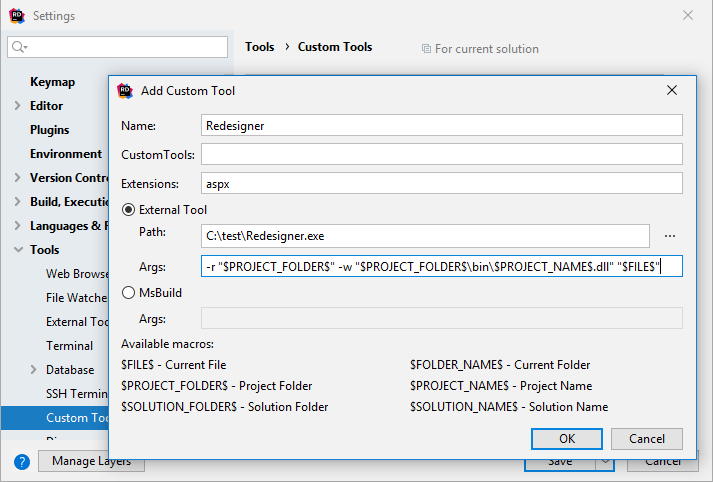
Click Save to apply the modifications and let JetBrains Rider choose where to save them, or save the modifications to a specific settings layer using the Save To list. For more information, see Layer-Based Settings.
A configured custom tool will be triggered every time you edit a file that have a specified extension. You can also trigger it manually by right-clicking a file in the Solution Explorer and choosing Execute [tool name] from the context menu.
If a custom tool provides some output, you can find it in backend.log ().
Add a local external tool
This example demonstrates how you can add OptiPNG as an external tool and use it to quickly optimize images in your project from JetBrains Rider.
In the Options dialog Ctrl+Alt+S, select Tools | External Tools.
Click
 and specify the following settings:
and specify the following settings: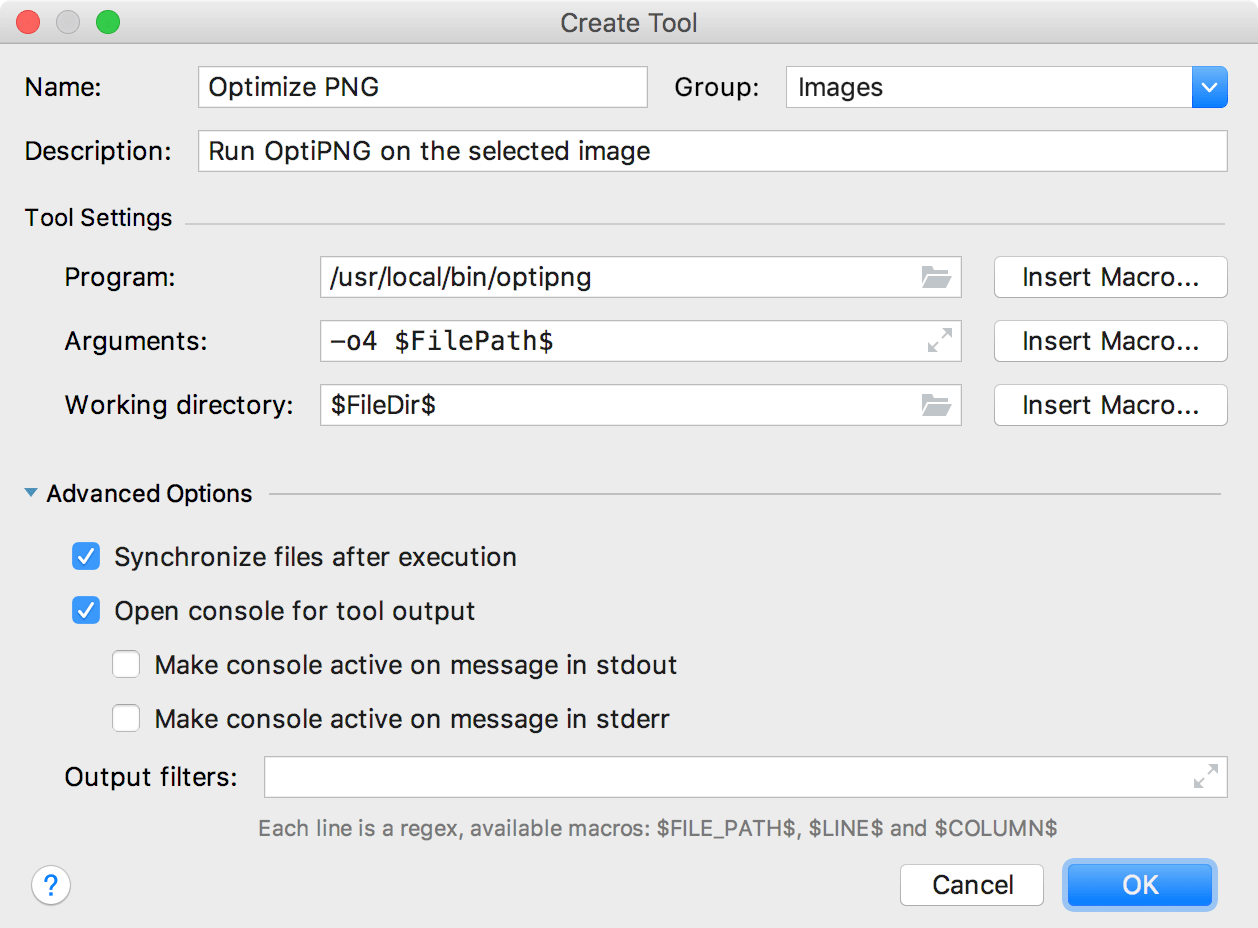
Name: The name of the tool that will be displayed in the JetBrains Rider interface (the Tools menu and context menus).
Group: The name of the group to which the tool belongs. You can select an existing group or type the name of a new group.
Description: A meaningful description of the tool.
Program: The name of the executable file. Specify it with an absolute path if the containing directory is not in your
PATHenvironment variable.Arguments: The arguments passed to the executable file, as you would specify them on the command line.
Working directory: The path to the current working directory from which the tool is executed.
In our case,
OptiPNGwill be run with the-o4 $FilePath$arguments. You can use macros that can refer to the project name, the current file path, a path to the PHP executable, and so on. Clicking the Insert macro button will open the Macros dialog that lists all available macros and their values.Click OK to add the tool and then apply the changes.
Run the added local external tool
To run the added tool on the selected class fileimage, do one of the following:
From the main menu, select .
Right-click a file in the Project tool window and select from the context menu.
In the Options dialog Ctrl+Alt+S, select Keymap, find the Optimize PNG action under the External Tools node, and assign a shortcut for it . Use the shortcut to run the tool.
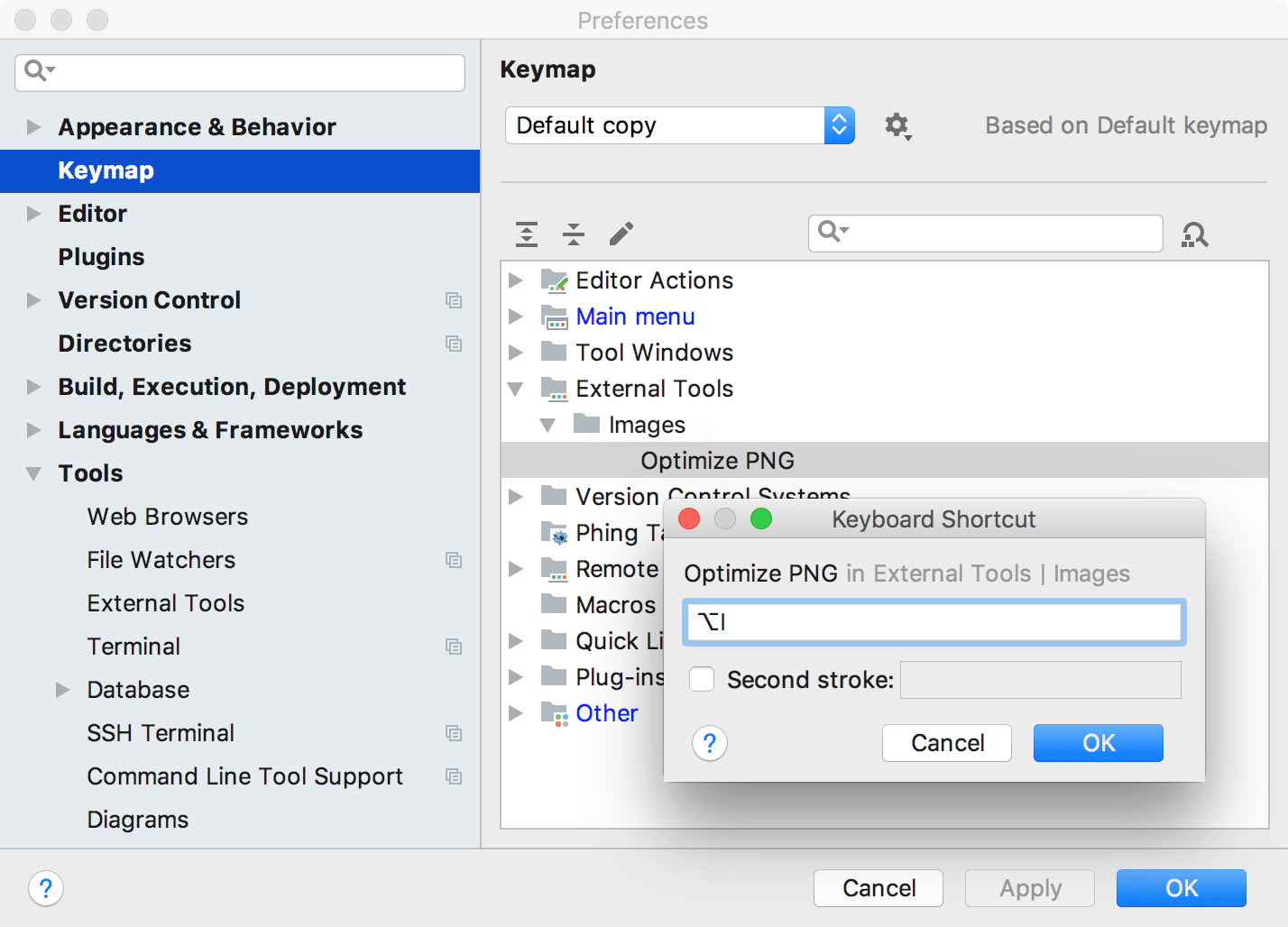
When the tool runs, its output is displayed in the Run tool window:
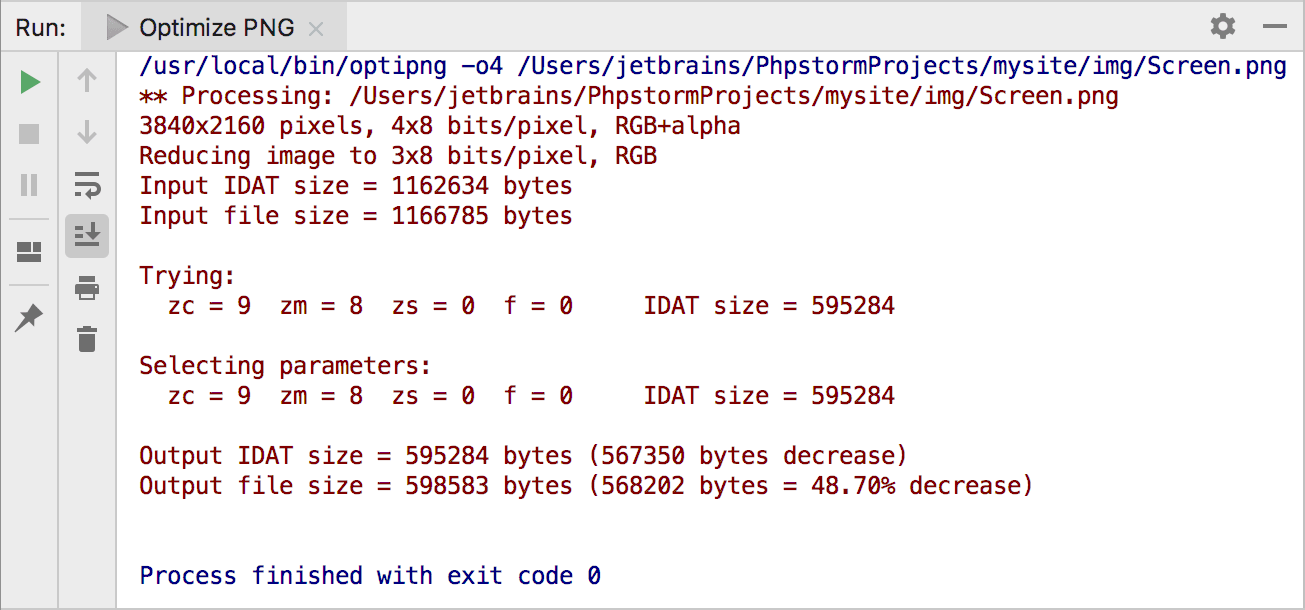
Add a remote SSH external tool
Remote SSH external tools are configured similarly to local external tools, but also define the remote server on which they are executed and require credentials for connecting to it via SSH. For details on working with the built-in SSh terminal, see Run SSH terminal.
This example demonstrates how you can add date as a remote SSH external tool that is executed on a remote server and returns the current date and time on it.
In the Options dialog Ctrl+Alt+S, select Tools | Remote SSH External Tools.
Click
 and specify the following settings:
and specify the following settings: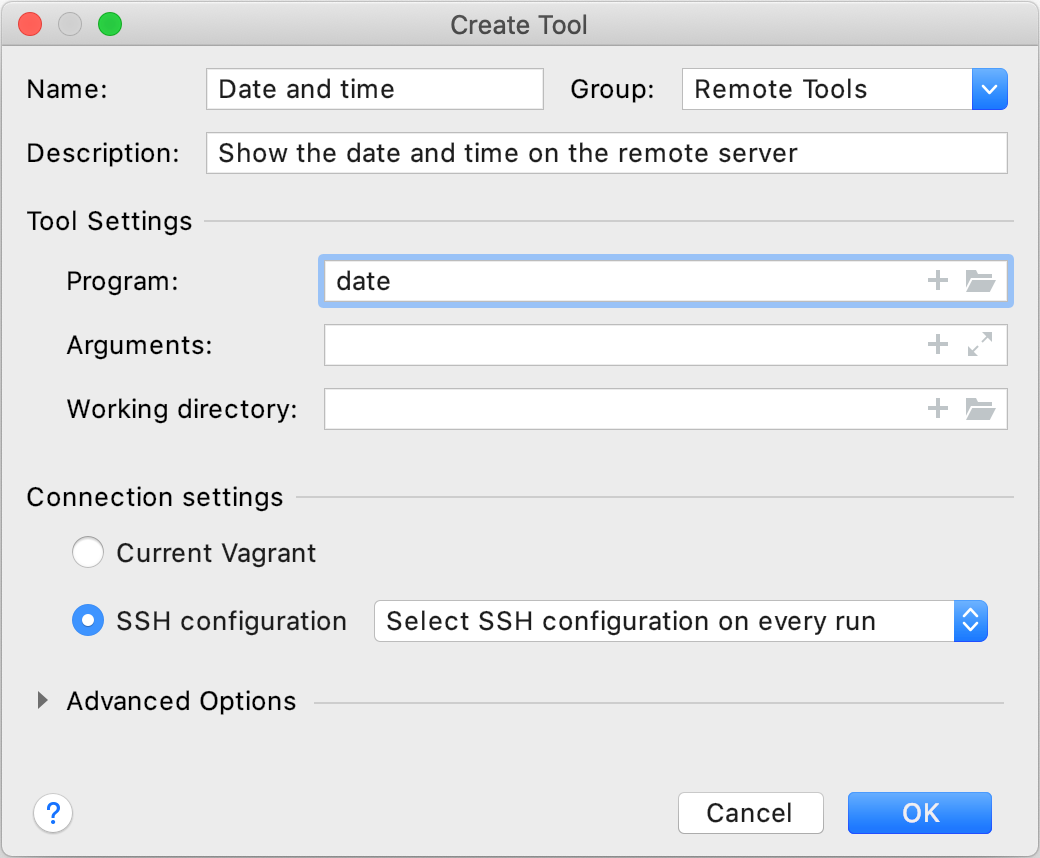
This dialog provides the same set of settings as when you add a local external tool, but selecting the remote server is also suggested. This can be one of your configured SSH configurations or a Vagrant box. By default, JetBrains Rider will ask you for the host, port, and relevant SSH credentials every time you run the tool on the server.
Click OK to add the tool and then apply the changes.
Run the added tool on a remote server
From the main menu, select Tools | Remote tools | Date and time.
In the Options dialog Ctrl+Alt+S, select Keymap, find the
Date and timeaction, and assign a shortcut for it. Use the shortcut to run the tool.
After you specify the host, port, and credentials, JetBrains Rider will connect to the server via SSH and run the date command, returning the output to the Run tool window in JetBrains Rider.